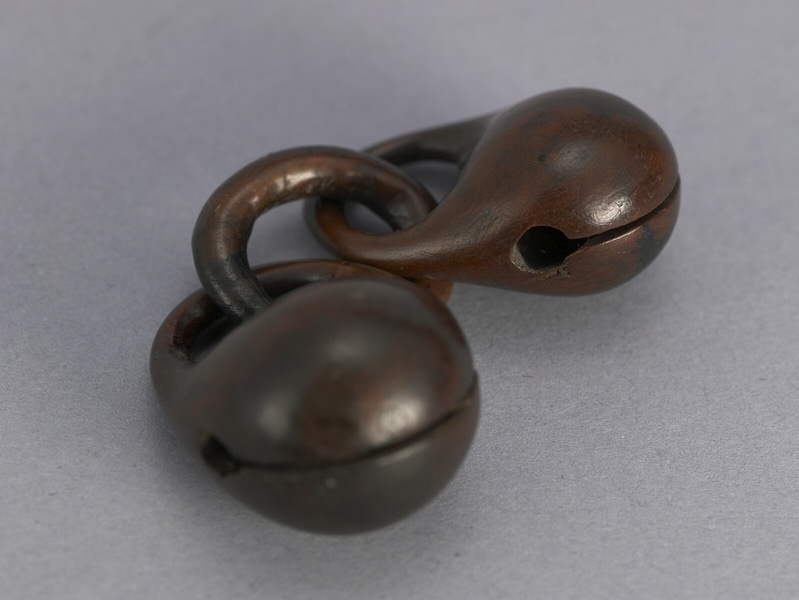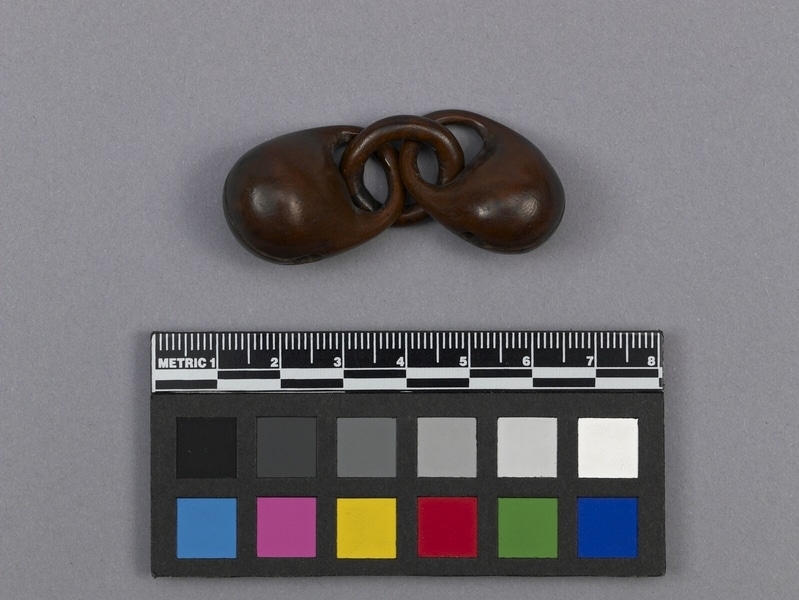Ornament Item Number: Ed5.1425 from the MOA: University of British Columbia


Description
Netsuke carved of very hard lightweight dark brown wood, consisting of elliptical- shaped ring to which are attached (all carved from one piece of wood) two ellipse shaped pieces, one end of each is carved out leaving a ring which passes through the central ring. The other end of each is bulbous and hollow, with a slit around the periphery, the slit having a circular perforation at each end.
History Of Use
Toggle to support an inro (small container) on a belt. This netsuke is carved in the shape of 2 wooden Buddhist gongs (mokugko). Netsuke were worn by Japanese men from the late 16th to mid-19th centuries; strung on one end of a cord, at the other end of which was attached an inro, smoking accessories, purse, or other things. A bead (ojime) was strung on the cord. The cord was put through the wearers girdle and the netsuke prevented the objects from slipping through.
Cultural Context
worn by men
Item History
- Made in Japan before 1953
- Collected before 1953
- Owned by Marion Stephan
- Owned by Charles H. Stephan before January 10, 1977
- Received from Charles H. Stephan (Donor) on January 10, 1977
What
- Name
- Ornament
- Identification Number
- Ed5.1425
- Type of Item
- ornament
- Material
- boxwood wood ?
- Manufacturing Technique
- cut, carved and polished
- Overall
- height 1.3 cm, width 2.0 cm
Who
- Culture
- Japanese
- Previous Owner
- Marion Stephan and Charles H. Stephan
- Received from
- Charles H. Stephan (Donor)
Where
- Holding Institution
- MOA: University of British Columbia
- Made in
- Japan
When
- Creation Date
- before 1953
- Collection Date
- before 1953
- Ownership Date
- before January 10, 1977
- Acquisition Date
- on January 10, 1977
Other
- Item Classes
- carvings & sculpture
- Condition
- good
- Current Location
- Case 79
- Accession Number
- 0352/0153